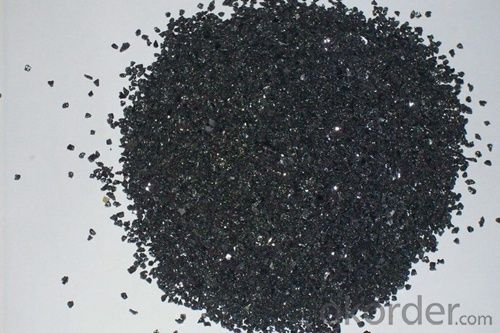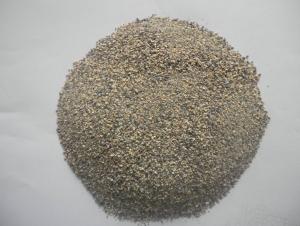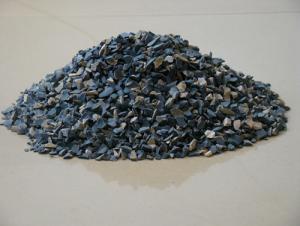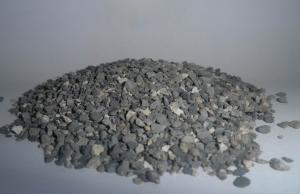High Quality Black Silicon Carbide/SiC Raw Materials for Refractory
- Loading Port:
- China main port
- Payment Terms:
- TT OR LC
- Min Order Qty:
- 2000 m.t.
- Supply Capability:
- 2000 m.t./month
OKorder Service Pledge
OKorder Financial Service
You Might Also Like
Packaging & Delivery
| Packaging Details: | 50Kg bag and carton bag outside |
| Delivery Detail: | Within 15 days |
Product Description
Application of ball clay
Ball clay is widely applied in making ramming mass, castable, plastic castable and other unshaped refractory products.
Advantages of ball clay
Compared with kaolin and common fire clay, ball clay holds better fabricability and agglutinating value.
Specification of ball clay
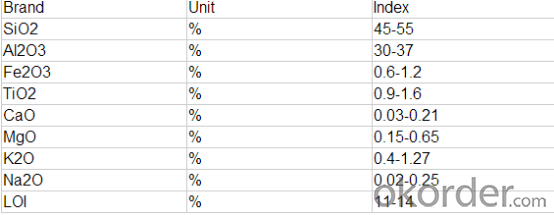
Packaging & Shipping

Our Services
1. Quality assurance,CX REFRACTORY use high grade raw material and do strict inspect during the whole procession. All products adopt GB,ISO,ASTM,BS,JIS and DIN standard as per requirement. ISO, BV, TUV, SGS certified.
2. Provide professional designing solution, field technical assitance and any other consulting.
3. Price advantage, provided by manufacturer directly,save much intermediate fees.
4. Professional team, specialized in refractory production since 1986,with advanced technology and vast experience.
5. High production capacity, fast delivery of goods.
6. 24*7 online service.
7. OEM service available.
- Q: What are the use of fire-resistant material and admixture?
- I am engaged in admixture and thus familiar. Welcome to exchange!
- Q: What is the role of adding chromium oxide green in unshaped refractory materials
- Generally, less is added in corundum or corundum spinel refractory material, but it can significantly improve the material performance such as high temperature strength, erosion resistance, thermal and shock stability, etc.
- Q: Who knows what is the external wall thermal insulation materials for level A fireproofing?
- In general, external wall thermal insulation materials can be divided into level A and level B by combustion grading. Level A is non-combustible material, and level B is combustible materials. A few years ago, the fire of the CCTV Building and Shenyang Hotel put the blame on the level B material. At present, the level A material is widely used, and the prices of same level A materials may be even cheaper than the level B material. Level A material is generally divided into thermal?mortar, phenolic foam board, rock wool board and foam cement board. I hope this information can be helpful to you. Hope you adopt.
- Q: The effect of a high content of water in liquid resin exerted on refractory material?
- For one thing, Substandard whiteness, transportation, low quality and the storage of refractory material may account for this. For another, a high content of moisture reduced the performance of refractory material. A high content of moisture is equal to buy water with same money in terms of trade settlement. Based on this, we can’t consider the super-standard water content from a single aspect, because the water content in refractory material is definitely super-standard, and another problem is particle size. Many people hold the idea that excessive amount of water content may revive its original performance, but it tends to have influenced the quality of refractory material.
- Q: How is the fire endurance of the fireproof paint?
- Fireproof endurance. fire resistance test of certain building components showed by standard time temperature curve from starting of fire to lose the supporting capabilities or its integrity or fireproof property. The fire proof endurance is 5hours.
- Q: Who can introduce the external wall thermal insulation materials fire rating regulations?
- 1. The thermal insulation material of level A combustion performance: Rock wool, glass wool, foam glass, foamed ceramics, foam cement, hole-closed perlite, etc. 2. combustion performance is level B1 insulation materials: Extruded polystyrene board (XPS) after special treatment / Special treatment of polyurethane (PU), phenolic aldehyde and gelatine powder polyphenyl granule 3 combustion performance is level B2 insulation material: Molding polystyrene board (EPS), extruded polystyrene board (XPS), polyurethane (PU), polyethylene (PE), etc. See the 2009 edition construction technical measures 4.3.6 Level A insulation material is only for fireproofing, but its thermal insulation performance is not better than organic XPS \\ EPS and other materials. I feel the best insulation materials should be modified phenolic board, which can keep insulation and fireproofing, but the unit price is very expensive. Insulation materials in the domestic market have some disadvantages, it is better to considere the materials within the acceptable range in the building needs.
- Q: What are the types of refractory sealant?
- 1. The characters of sealant for construction According to the characters, sealant for buildings are classified into caulk, sealants and construction sealant in China; They are named in accordance with the function and different basepolymeters. In the relevant standard for products,
- Q: What's meaning of CN of fire-resistant material?
- The commonly used preparation methodsinclude shock compression, high-pressure pyrolysis, ion implantation, reactive sputtering, plasma chemical vapor deposition, electrochemicaldeposition, ion beam sputtering, , low-energy ion radiation, pulsed arc discharge,pulsed laser inducing, etc. But the compounding result of superhard materialis not ideal due to deposition of amorphous CN film, nanometer level sizedC3N4 crystalline grain set in the amorphous film and few large graincrystal.
- Q: how long is the fire endurance of plasterboard?
- Plasterboard is non-flammable B1 level products. There are introductions in Fireproof Specification of National Standard Building Interior Decoration Design. Plaster board mounted on steel stud can be used as A level decoration materials. In accordance with the national fire safety rules on fire durance of walls and ceilings and other components, we can not simply say whether a piece of gypsum board can meet the requirements. In GB "gypsum board" it clearly states: Fireproof plasterboard can endure fire longer than 20minutes. Wherein Dragon brand fire-resistant gypsum board can endure fire longer than 40 mintues. Gypsum board is comprised of dry wall, steel stud and various auxiliary materials. the fireproof performance of the gypsum board system is relevant to the type, quality , layers of the gypsum board, quality of keel and installations, whether the rock wool is filled and its unit weight, the treatment of seaming and some minor joints.
- Q: who knows the fire endurance of fireproof coating?
- this is not specfied , depending on design requirements. The products we made have fire endurance from 1to 4hours . We have not done any higher.how is the fireproof coating in improving fire resistance of building components? finishing fireproof coating; wood fireproof coating; fire-resistant coating for steel structure, fire-resistant coating for concrete structures, tunnel fire retardant paint, fire retardant paint for the cable. Fire retardant coating is composed of the base materials (that is film forming substance), pigments, ordinary coating additives, fire retardant agent and dispersion medium. In addition to fire retardant agent, other components functions the same as in ordinary coating, but its performance and thickness are specifically required.
Send your message to us
High Quality Black Silicon Carbide/SiC Raw Materials for Refractory
- Loading Port:
- China main port
- Payment Terms:
- TT OR LC
- Min Order Qty:
- 2000 m.t.
- Supply Capability:
- 2000 m.t./month
OKorder Service Pledge
OKorder Financial Service
Similar products
Hot products
Hot Searches
Related keywords



